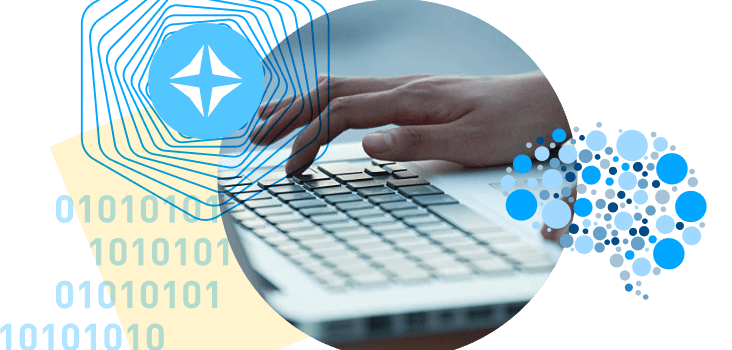The modern workforce is more dynamic, distributed, and digitally connected than it has been in the past. With remote and hybrid teams becoming the norm, businesses face new challenges in keeping employees engaged, aligned, and productive across time zones and locations.
AI plays a direct role in how organizations manage, support, and empower their people. From optimizing schedules and communication to identifying burnout risks and streamlining collaboration, AI tools are transforming workforce engagement into a smarter, more strategic process.
This article explores how AI is reshaping workforce engagement management and what it means for businesses looking to stay agile, efficient, and employee-focused.
Quick Takeaways
- AI automates workforce management tasks like scheduling, resource allocation, and shift optimization, saving time and reducing manual errors.
Personalized insights from AI help improve employee engagement, monitor wellness, and identify burnout risks early. - AI-powered tools enhance collaboration and communication across remote and hybrid teams with real-time updates and intelligent workflows.
- Predictive analytics and performance tracking allow businesses to adjust staffing and training in response to changing needs.
- Combining AI with cloud-based systems streamlines workforce operations and supports better decision-making across departments.
Understanding AI Workforce Management
AI workforce management refers to the use of artificial intelligence to optimize and automate various aspects of managing a team, from scheduling to performance monitoring. Traditional workforce management often involves manual processes that can be time-consuming and prone to errors. However, AI enhances these methods by automating routine tasks and providing data-driven insights.
AI-driven systems can handle complex tasks such as:
- Predicting workforce needs
- Optimizing resource allocation
- Managing shift schedules with precision
These systems are also designed to integrate seamlessly with communication platforms, ensuring that teams can collaborate efficiently, regardless of location.
By improving operations and decision-making, AI-driven technologies are not only optimizing processes, but also freeing employees to focus on more creative, strategic tasks. The chart below highlights the top benefits businesses report from adopting AI:

Core Benefits of AI for Workforce Engagement
AI offers several key benefits that improve workforce engagement and management efficiency:
Enhanced Employee Engagement
AI helps businesses create personalized work experiences by analyzing engagement data. It can provide tailored feedback, track employee performance, and recommend proactive measures to improve satisfaction and retention.
Automated Scheduling and Resource Allocation
AI tools ensure that the right resources are allocated at the right time. They optimize staffing levels by predicting demand and adjusting schedules to prevent both overstaffing and understaffing, which leads to greater operational efficiency.
Efficient Communication
AI enhances communication by providing real-time updates and facilitating smooth interactions among team members, especially in remote or hybrid environments. These tools can analyze communication patterns to identify potential bottlenecks and suggest improvements.
Real-Time Collaboration
AI-powered platforms help teams collaborate more effectively by automating workflows and reducing manual errors. In fact, a recent survey found that businesses using AI extensively reported a 72% increase in high productivity levels, compared to 55% for those with limited AI use.
Beyond AI alone, productivity also rises with better collaboration infrastructure. The chart below shows that as organizations adopt more collaboration tools, the percentage of employees reporting high productivity increases from just 38% with no tools to 80% with seven.

This highlights how the combination of AI and robust collaboration tools creates a work environment that supports higher output, especially in distributed or hybrid teams.
AI and Employee Wellness Monitoring
Engaged employees are productive, supported, balanced, and less likely to burn out. AI tools are helping businesses take a more proactive approach to workforce wellness by identifying early signs of stress and disengagement before they escalate into bigger issues.
By analyzing behavioral data such as changes in communication patterns, task completion rates, or time spent across platforms, AI can detect subtle shifts that may indicate workload imbalance or burnout risk. Some platforms also integrate with wellness check-ins or sentiment analysis tools to flag teams or individuals that may need support.
This kind of real-time insight gives managers the ability to act early, whether it’s adjusting workloads, offering wellness resources, or checking in personally. Over time, AI-driven wellness monitoring contributes to better retention, higher morale, and a workplace culture where employees feel seen and supported.
AI Use Cases in Workforce Engagement Management
AI’s impact on workforce engagement management is becoming increasingly evident across various industries. In fact, 57% of business leaders predict that AI will substantially transform their businesses within the next three years, demonstrating the far-reaching potential of AI in workforce management.
Here are a few practical use cases where AI-driven solutions improve workforce management:
- AI-Driven Analytics for Staffing Optimization: Predictive analytics powered by AI can forecast staffing needs based on historical data, trends, and real-time variables. This allows businesses to adjust their workforce in response to fluctuating demands, ensuring optimal staffing levels at all times.
- Communication Pattern Analysis: AI tools can analyze how teams communicate across different platforms, identifying patterns that impact productivity. By recognizing bottlenecks or breakdowns in communication, AI systems offer actionable insights to improve collaboration and streamline workflows.
- Training and Development Opportunities: AI-powered platforms can track employee performance and engagement, identifying skill gaps and recommending tailored training programs. By analyzing employee behavior, these tools suggest development paths that boost morale, increase retention, and enhance overall productivity.
These use cases demonstrate how AI transforms workforce management, enabling businesses to remain agile and responsive to changing work dynamics.
Integrating AI with Cloud-Based Communication Tools
The integration of AI with cloud-based communication tools is a game-changer for managing remote and hybrid workforces. By combining the power of AI with the flexibility of cloud-based systems, businesses can ensure:
- Seamless communication
- Real-time collaboration
- Improved operational efficiency
AI tools help manage distributed teams by providing real-time updates, automating administrative tasks, and facilitating seamless collaboration across different locations. These platforms also support unified communication systems that allow for better coordination and workflow management, ensuring that teams stay aligned on goals and deadlines.
Cloud-based communication tools, enhanced with AI capabilities, create an environment where managers can monitor performance, track productivity, and foster engagement without the need for constant manual oversight. This combination of AI and cloud technology offers businesses a powerful solution for optimizing workforce engagement and management.
Overcoming Common Barriers to AI Adoption in Workforce Management
While the benefits of AI are clear, many organizations still face obstacles when it comes to implementation. Concerns about data privacy, employee resistance, and lack of in-house expertise often hold businesses back from getting the most out of AI-driven tools.
One of the biggest challenges is trust. Employees may worry that AI is being used to monitor them too closely or replace their roles. Clear communication about the purpose of AI (augmenting work, not replacing it) goes a long way in building confidence and buy-in. Involving teams early in the adoption process also helps them understand how AI can improve their daily experience.
Data privacy and compliance are also top of mind, especially for businesses handling sensitive information. Choosing AI tools with built-in security features, access controls, and transparent data use policies ensures compliance while protecting employee trust.
Finally, the learning curve can feel steep. Businesses that succeed with AI often start small by rolling out pilot programs, offering training, and selecting tools with intuitive interfaces. With the right approach, even smaller teams can adopt AI effectively and see real operational gains.
Turn Workforce Data into Action Today with Intermedia
AI is changing the way businesses engage, support, and manage their teams, from automating scheduling to enhancing communication and even monitoring employee well-being. With the right tools in place, organizations can build more efficient operations and more connected, productive workforces.
Ready to improve how your team works and connects? Explore how Intermedia’s AI-enhanced communication and management tools can help you boost engagement, streamline operations, and support your workforce—wherever they are. Request a demo today.
June 11, 2025
Explore other posts on these topics: AI




